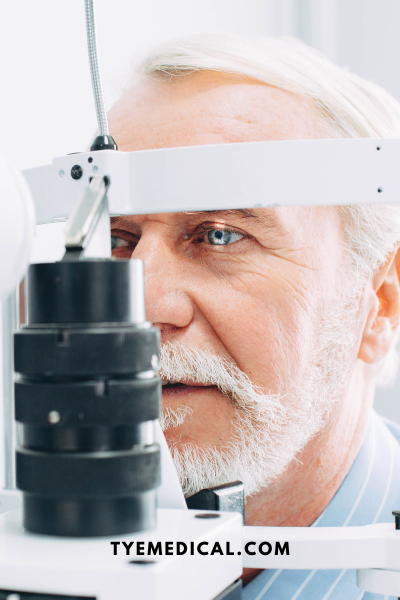What to Expect During Cataract Surgery Recovery
Dec 28th 2020
About 10 million cataract surgeries are performed around the world every year, and it’s an extremely common procedure in the U.S. and European countries. But it’s still important to prepare yourself for cataract surgery recovery to reduce the risk of post-surgery complications.
Find out what happens during the procedure, what to expect afterward, and what kind of restrictions you’ll have during recovery.
 Why Do You Need Cataract Surgery?
Why Do You Need Cataract Surgery?
A healthy human eye contains a clear lens that plays a key role in how well you see. Over time, the lens can become cloudy, making it difficult to see through and increasing glare from lights. Oftentimes, difficulty with nighttime driving is the first clue that cataracts are forming.
When vision loss begins to affect your daily life or interferes with another eye problem, your doctor will recommend cataract surgery.
During the surgery, your affected eye lens is removed and replaced with an artificial lens. It’s typically done as an outpatient procedure and only takes about ten minutes to perform (without complications). No overnight stay is required, so be prepared to have someone drive you home after surgery.
What are the Risks?
Cataracts don’t harm your eye or health in any way and only affect your vision. So you don’t need to worry if you can’t schedule the procedure immediately.
Most people have no complications during cataract surgery recovery, especially if they follow their doctor’s restrictions.
But as with all surgeries, it does come with some risks to consider. It’s possible to experience post-surgery problems like:
- Loss of vision
- Infection
- Inflammation
- Swelling
- Bleeding
- Drooping eyelid
- Glaucoma
- Retinal detachment
On rare occasions, an underlying eye condition like glaucoma or macular degeneration (an eye disease that causes vision loss) prevents vision improvement after surgery. If you have another eye condition, be sure to talk with your doctor about how it might affect your cataract surgery recovery.
 What Causes Cataracts
What Causes Cataracts
Cataracts are a normal part of aging and begin developing around age 40 even though most people don’t notice symptoms until after age 60.
Here’s what’s happening. Your eye lenses are made of mostly water and proteins. These proteins break down over years and linger in your eyes, clouding your lenses.
While cataracts are common in older adults, you’re more likely to develop them if you:
- Live somewhere with heavy air pollution
- Smoke cigarettes
- Have a family history of cataracts
- Consume alcohol heavily
Other factors that speed up cataract formation include:
- Diabetes
- Radiation treatment to the upper body
- Steroids (often used to treat arthritis and lupus)
- Eye surgery or injuries
- Heavy exposure to the sun without eye protection
- Phenothiazine medications
What Type of Lens Implant Will You Get?
The artificial lens that’s implanted in your eye is referred to as an intraocular lens – or IOL. Just as you don’t see or feel your current lens, you won’t feel this one either. It will become a permanent part of your eyes, just like the lenses you have now.
Several different types of IOLs are available. As your surgery approaches, your doctor will perform an ultrasound test to collect information on the size and shape of your eye. This is key for determining the right lens for your needs.
IOLs are made of:
- Plastic
- Acrylic
- Silicone
Most IOLs are clear and flexible like your natural lens. Without any complicating factors, your distance vision will likely improve after cataract surgery. Depending on the type of lens implanted, you might also have improved close-up vision, though this is less common. (More on that below.)
Lens replacement requires only a small incision and very few (or no) stitches. After removing the “old” lens, your surgeon will slide the flexible lens into the empty capsule or sleeve your old, natural lens occupied. The capsule is a natural part of your eye that contains and supports the lens, acting as a sleeve or casing. This is not removed during surgery.
General Lens Types:
- Fixed-focus monofocal – Most common choice for lens replacement. Uses a single strength for near, mid, or long distance vision. Doesn’t stretch to help you focus between near and distant objects like your natural lens. It stays focused at one fixed distance. Even if your distance vision improves after cataract surgery (which is usual), you might still need reading glasses to correct your near vision.
- Multifocal - Uses several different strengths for near, medium, and far vision, like progressive lenses. You will likely not need glasses to correct your vision
- Accommodating-focus monofocal - Uses a single focus strength but responds to eye muscle movements, shifting focus to near or distant objects. This is because it’s more flexible and more like your natural lens. You’re less likely to need reading glasses with this lens. However, this lens is used less frequently because of higher out-of-pocket cost for the patient.
- Astigmatism correction (toric) - A toric lens is used for patients with significant astigmatism. The lens also corrects the astigmatism, but if your condition is severe enough, the new lens might not correct it completely. This means you might still need glasses for distance vision and near vision after surgery.
What Happens During the Procedure?
As an outpatient procedure, cataract surgery takes less than an hour, sometimes as little as ten minutes.
Here’s the typical cataract surgery process:
- Pupils dilated with eyedrops
- Local anesthetics administered to numb area
- Sedative is given for relaxation (you’ll be awake but groggy)
- Surgeon removes the old lens and implants IOL
Doctors typically operate on only one eye during a procedure. If you have cataracts in both eyes, your doctor will schedule the second surgery after your first eye has healed.
What Will My Vision Be Like During Recovery?
During cataract surgery recovery, expect your vision to remain blurry for a few days. Your eye will need time to heal and adjust to the new lens.
You might notice that colors appear brighter since you’re looking through a clear lens.
What Is the Typical Cataract Surgery Recovery Time?
Most of the discomfort disappears in two or three days, but complete healing takes up to eight to twelve weeks. So continue being gentle with your eyes, refraining from rubbing or disturbing the area until it’s completely healed.
 Will I Need Glasses?
Will I Need Glasses?
Most people need glasses at some point after cataract surgery recovery, especially if a fixed-focus lens is used for distance. In this case, you’ll require glasses for reading and close-up vision.
Aside from the type of lens you receive during cataract surgery, your need for glasses will also depend on the overall health of your eye. It’s also possible that astigmatism can be severe enough that a news lens can’t correct it completely. In that case, you might still require glasses for distance vision.
Your doctor will wait until your eyes have fully healed from surgery before providing a final prescription for eyeglasses. Expect to get your post-surgery prescription one to three months later.
What Is Recovery Like?
Most doctors require a series of follow up appointments, the first one being a day or two after your surgery, then a week later, and then a month later. It’s important to keep these appointments so your doctor can monitor the healing process.
Also, you might experience itchiness or discomfort in or around your eyes for the first few days. This is a normal part of cataract surgery recovery. But refrain from rubbing or pressing on your eye since it’s not yet healed.
Your doctor will likely send you home with an eye patch and an eye shield. The eye patch is typically worn during the day, and the eye shield is worn at night. It’s recommended that you use these protective items for at least the first few days after surgery.
Many doctors prescribe eye drops to aid in recovery. These drops help prevent infection, control eye pressure, and reduce inflammation. If your doctor doesn’t prescribe these eye drops, then the medications were likely injected into your eye during the procedure.
Will I Have Restrictions After Surgery?
Even though you’ll probably feel well soon after surgery, you’ll still need to take precautions to avoid complications during the recovery period.
For 24-48 hours avoid:
- Sneezing or vomiting (if possible)
- Driving
For 1-3 weeks avoid:
- Bending over
- Heavy lifting
- Strenuous activity
- Swimming
- Hot tubs
- Eye irritants like dust, dirt, wind
- Rubbing your eye
A few hours after surgery, you can resume:
- Computer work
- Showering or bathing
- TV watching
When Can I Resume Exercise?
You can return to your walking routine in as little as three days if your doctor approves the activity. But as for other exercise routines, you’ll need to wait 3-4 weeks before getting back in the game. Many activities – like bending - can increase eye pressure and cause complications during cataract surgery recovery.
What Are the Signs of Complications?
Contact your doctor immediately if you experience:
- Increased eyelid swelling
- Additional vision loss
- Pain not relieved by over-the-counter pain medications
- Light flashes or new floaters (spots in front of your eyes)
Can I Develop Another Cataract in the Same Eye?
Yes and no. A new cataract doesn’t develop on the newly implanted lens. Instead, it’s called a “secondary cataract” that forms on the back of the lens capsule that contains and supports your new lens. In this case, the capsule itself becomes cloudy and negatively affects your vision despite the new lens.
In the medical field, this secondary cataract is known as posterior capsule opacification (PCO). The condition typically occurs in people who’ve already had cataract surgery in that eye, and it’s corrected with a short, painless outpatient procedure.
Be Confident, But Informed
Because cataract surgeries are so common, the methods have been fine-tuned. You have little to be concerned about when undergoing this procedure. However, it’s always better to be an informed patient who’s prepared for cataract surgery recovery and the reasonable restrictions it brings. Just be sure that your surgeon is aware of all your diagnosed health conditions and medications. And don’t forget to bring a driver for the trip home!


